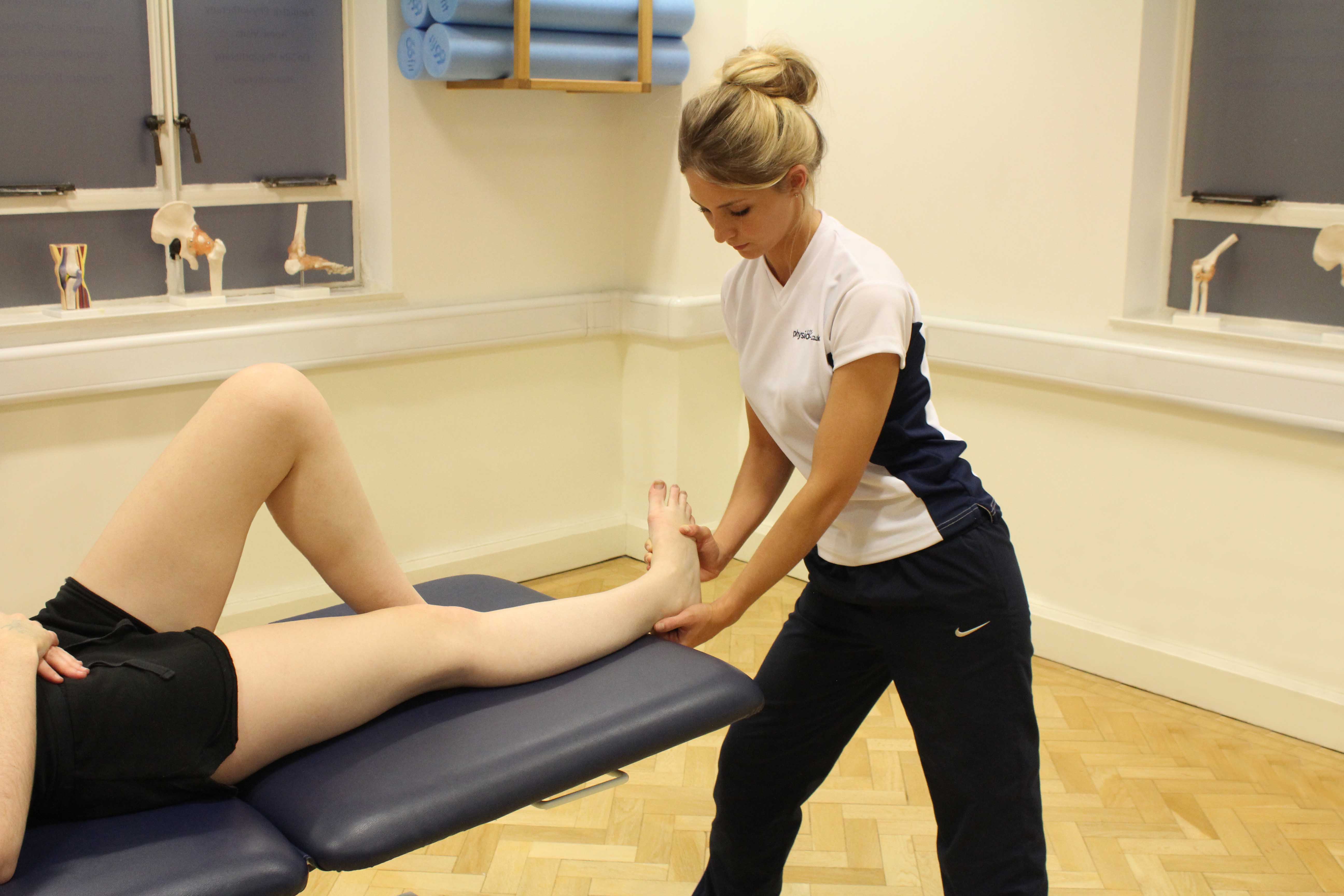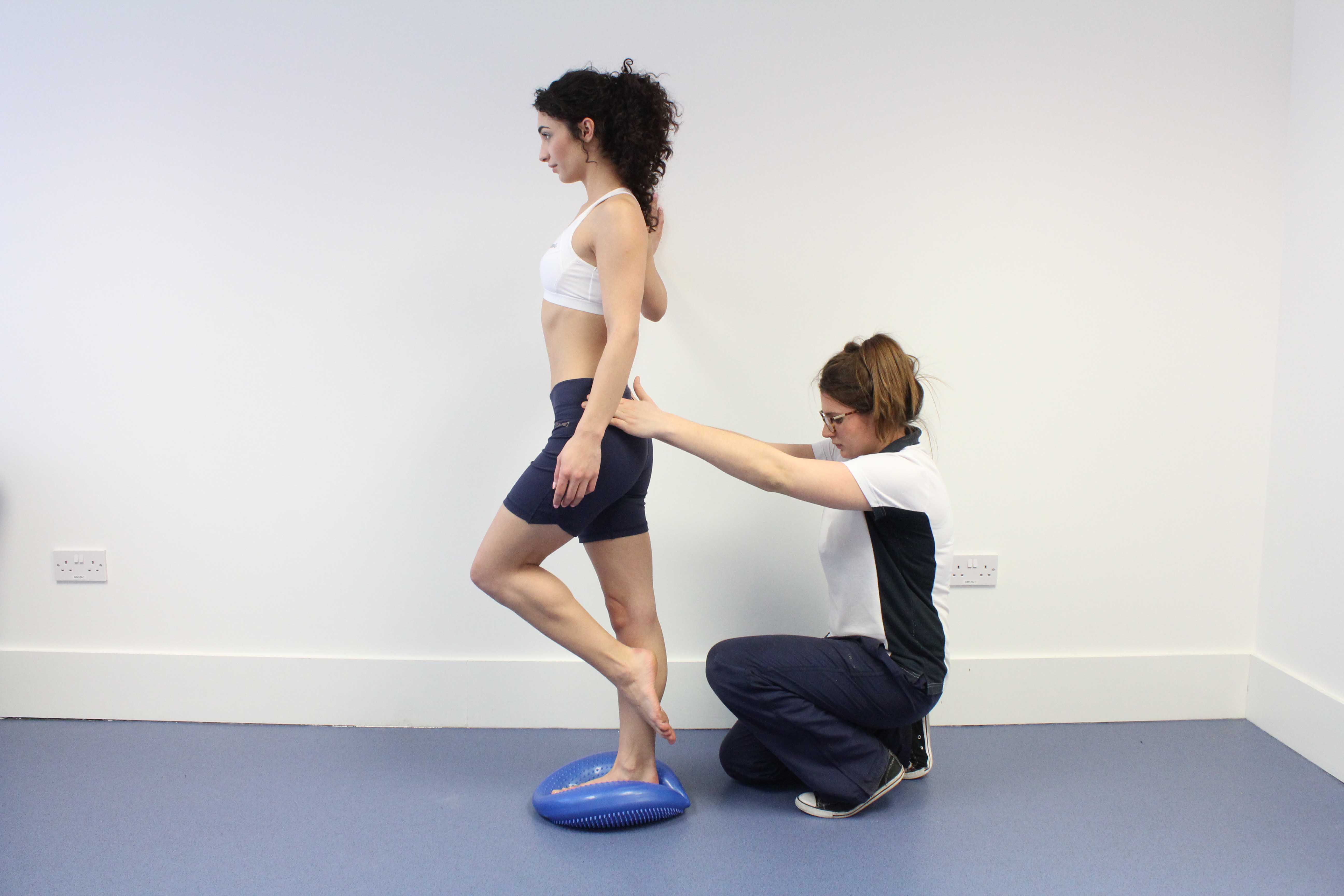What is tibialis posterior tendinopathy?
The tibialis posterior is a muscle in the lower leg that passes behind the bony bump on the inside of the ankle. Tibialis posterior tendinopathy is swelling within the tendon of this muscle. Physiotherapy is a successful treatment for tibialis posterior tendiniopathy.
How does tibialis posterior tendinopathy happen?
Tibialis posterior tendinopathy is caused by overuse or overstretching of the tibialis posterior tendon. The tibialis posterior muscle controls foot movement and supports the arch of the foot. Repetitive use of the tibialis posterior muscle can lead to microscopic tears within its tendon. The body produces inflammation to repair these tears. The inflammation within the tendon is tendinopathy.
 Above: Passive stretch of the connective tissues in the foot and ankle by experienced therapist
Above: Passive stretch of the connective tissues in the foot and ankle by experienced therapistWhat are the symptoms of tibialis posterior tendinopathy?
Tibialis posterior tendinopathy causes a gradual onset of pain behind the bony bump on the inside of the ankle. At first, the tendon may only be painful following exercise. Certain movements of the ankle may also be stiff or tight. These initial signs often disappear with movement, massage or heat over the inside of the ankle and, therefore, are often ignored. However, if you continue to exercise, the tendinopathy will progress and the pain within the tendon worsens to a point where your pain is present all of the time. Other symptoms may include:
What should I do if I have tibialis posterior tendinopathy?
Tibialis posterior tendinopathy does not normally get better on its own if the cause is not addressed and you continue to exercise. If you suspect that you have tibialis posterior tendinopathy, you should arrange a physiotherapy appointment as soon as possible. In the meantime, you can begin initial treatment. To do this you should rest your leg and apply ice to the inside of your ankle using a bag of frozen peas or crushed ice wrapped in a damp cloth for 15-20 minutes every couple of hours.
What shouldn’t I do if I have tibialis posterior tendinopathy?
If you suspect that you have tibialis posterior tendinopathy, you should not ignore your problem. Your pain may reduce as you exercise but the exercise you are doing may be causing further damage.
 Above: Stability training for the foot and ankle supervised by an experienced physiotherapist
Above: Stability training for the foot and ankle supervised by an experienced physiotherapistCould there be any long-term effects from tibialis posterior tendinopathy?
Tibialis posterior tendinopathy does not produce any long-term effects if it is properly diagnosed and treated.
Physiotherapy treatment for tibialis posterior tendinopathy.
Physiotherapy is important in the treatment of tibialis posterior tendinopathy. Your physiotherapist can initially confirm your diagnosis and the severity of your injury. Following the initial assessment your physiotherapist will devise an appropriate treatment plan. Treatment may involve: Your physiotherapist will assess why you developed tibialis posterior tendinopathy and address this during your recovery to reduce the chances of a reoccurrence when you return to full activity and sport.
To arrange an assessment with a specialist physiotherapist call Physio.co.uk on 0330 088 7800 or book online.

 0330 088 7800
0330 088 7800


































